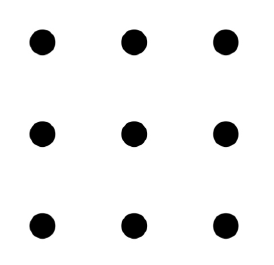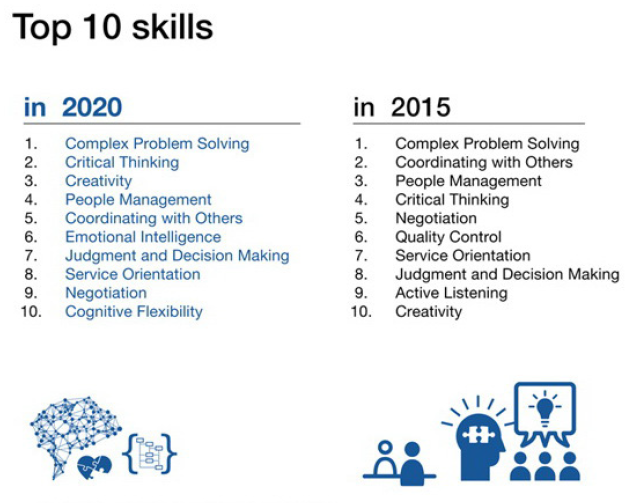1. Introduction
In early 2020, the coronavirus pandemic disrupted the learning process of more than 1.6 billion students worldwide. Higher education organizations reacted and promptly adapted, in what otherwise would have been a time-consuming process. The learning transition from classroom to on-line happened in months as digital technologies were integrated into both in-person and remote classrooms. [9]
In a changing global world, a flexible and creative mindset are essential skills for learning and generating valuable ideas. This requires exploring problems with an open mind, establishing connections, learning from mistakes, and exploring new opportunities. Nowadays, employers consider not only skillful candidates but also those that show emotional intelligence, learnability, creativity, culture, resilience, empathy, and integrity, attributes that universities seldom foster and look for in admissions. The understanding of the interrelationship between formal considerations of shape, colour, organisation, composition, and cultural signposts embedded in graphic communication is the soul of successful and effective approaches to design.[10]
“I believe EQ (Emotional Intelligence) and Growth mindset are among the top consideration, as well as integrity! Agree that most of these are not taught explicitly in school! Skills are less important in the future as AI and robotic can replace many labors, so creative problem solving and critical thinking + communication will become more important skills” (2021, Justin Tsui - Lean Startup & Business Innovation Consultant - Hong Kong) [12]
Culture in the broad sense encompasses multiple forms and manifestations (art, architecture, dance, design, cinema, entertainment, fashion, gastronomy, history, luxury, literature, music, theatre, technology, photography, etc.) and represents considerably much more than a simple trend, it is usually considered to be the uppermost form of representation of society. Creative inspiration arises from multiple areas of knowledge, it is an ongoing understanding and reinterpretation process that nourishes on culture.
Economists consider creativity to be essential in the recombination of different elements to produce emerging technologies, new products, thus generating economic growth. [4]
2. Creative Process
Creativity is a cognitive and rational process that depends on previous learnings, addressing the practice of creating new products, services, and customer experiences as a science [6], this requires that an individual uses reasoning (analyzing, combining, synthesizing, articulating), to attain a solution. It is an ongoing process that involves emotional intelligence, learning, understanding, and experimentation that nourishes on cultures, art, history, technology, sociology, cuisine, connections, insights, listening to elders, acknowledging traditions, nurturing side projects, observing people, playing, empathizing with problems, examining available resources, adapting existing solutions, experimenting and evaluating, making mistakes, reflecting, taking notes, drawing on paper, sleeping on it, laughing, being flexible, synthesizing and above all thinking.[10]
“Creativity can solve almost any problem” (2012 - George Lois) [7]
Furthermore, traveling and cultural engagement also offers the occasion for an immersive experience, characteristic of unique destinations and dissimilar civilizations, crucial for an individual and mental development. Then again, reading and listening (books, articles, images, sounds, music) allows the assimilation of distinct learnings, fostering imagination and additionally creating a new mindset, that encompasses the individual’s cultural and cognitive background, creating a new perception of reality. One can summarize the creative process as:
something + something different’ = something new with additional value.
Creative skills can be built by observing beyond the obvious, making connections and nurturing ideas. Creativity, like any other skill improves with practice [8]. During two semesters in the creativity and innovation atelier at ISEC Lisboa, undergraduate students developed creative skills using several design thinking methodologies [2], in project-based learning assignments to devise solutions, allowing students to share and learn from each other. The following methodologies were applied to spur student’s creativity:
Sketching and drawing to improve mental fluency and visual literacy
Creative writing (3-5 topics and write a small story/advertising)
Brainstorming: how to generate ideas (20 min.; write down and do not criticize)
Design Process: Understand - Define - Ideate - Prototype - Refine (Form, Function, Meaning, Value, Sustainability) - Test (Details, Clear, Specific, Standard)
SCAMPER: Substitute; Combine; Adapt; Magnify; Modify; Put to other uses; Eliminate; Rearrange
Google Design Sprint: Understand - Define, Diverge - Decide, Prototype - Validate
5W1H: Who; What; When; Where; Why; How
Thinking outside the Box (9-dot problem - 4lines, 16-dot problem - 6 lines)

Fig.2 Thinking outside the Box - 9-dot problem “Join the 9 points with 4 straight lines without lifting the pen from the paper (there are 4 possible solutions)” this exercise assumes that students have no internet access and use a pencil and paper to solve the problem. Source: the author
Students applied the above-mentioned creative techniques, including the 9-dot problem [5] a 10-minute individual class assignment, towards the development of individuals and group skills in creative thinking, providing the following statements:
“Creativity classes were quite interesting, from start to finish. I can say it was an out of the box class where students were able to express all their idea’s. At first, we were afraid to share ideas for fear of judgment, but we all learned brainstorming, and from then onwards everyone wanted to participate and share their ideas. The teacher showed us several different movies, documentaries, photos that showed different perspectives, trying to develop our reasoning, break out of our previous mindset. Class was the place where we could say the strangest thing, and atypical comments were valid. In my opinion, it was a dynamic and interesting class that made me see the world in a different way, where all ideas have a place.” (2021. Carolina Barros)
“At first didn't get why we had to have this class because I thought I was already comfortable with some of my crazy ideas and sharing it with others. However, I realized that the teacher was helpful developing my mindset, and if now I have no problem talking about my ideas it is because of that class. At first some exercises were a little hard because we were shy, and I think that most of us felt that our ideas were not good enough or even a little stupid, the teacher then said a thing that stuck my mind "There are no right or wrong ideas". That meant a lot, and it changed the way l see things now.” (2021. Ana Leite)
“The Creativity and Innovation Classes were a big surprise for me. I had a teacher who made us think and not take things for granted. He always asked us to get out of our comfort zone and think outside the box. I learned that an idea is not right or wrong, it all depends on how we see a situation. That we must open our horizons because that is the only way to grow. Mr. Springer tried to show us different realities, and that we should be attentive to the needs of others. That we should not only look at ourselves. We are part of a society and a globalized world. Everything is possible if you dedicate time and work to accomplish something.” (2021. Ondina Marques)
“On my first semester in Digital Marketing, I attended the Creativity and Innovation class, making me feel awkwardly. The proposed essays required us to work our creativity to develop a mindset, teaching us to solve future problems. Specific techniques proved very useful to solve the assignments, such as SMART (Specific Purpose, Measurable, Achievable, Realistic, Timely) useful to develop our final project, and the acronym 5W's (Who, What, Where, When, Why) which I used to create a timeless product exclusively for women. It also taught me that history and context are vital, the additional references acquired helped understand innovation. I regard this class fundamental, where one has to continually think marketing professionals.” (2021. Tiago Carvalho)
“Prof. Springer Creativity and Innovation class provided tools to think out of the box, cultivating knowledge by means of different exercises and not discarding any ideas. We used methods like KISSS (Keep It Short, Simple & Systematic), SMART, SCAMPER and Brainstorming, to enhance creative skills. We viewed movies, considering the message, and what becomes human psychology, and further implemented creating advertising and a concept. I believe the class was very useful.” (2021. Diogo Vales)
Providing real-time observations and insights is essential to stimulate students with diverse visual culture manifestations, using on-line and face-to-face active methodologies. These creative and immersive experiences allow students to overcome cognitive barriers and to better develop a creative approach addressing issues, applying methodologies onto assignments, ultimately encouraging innovation.
In complex socio-economic environments subjects such as innovation, sustainability, ethics, represent issues that require not only creativity but also understanding and empathy for human condition. Together with creativity, design engages in transformation, decoding meanings, establishing connections, generating interpretations, creating meaning, and delivering solutions in specific contexts. This requires not only a broad range of inputs and inspirations, pointing key factors, but also knowledge and decision management, assuming responsibility for outcomes. One can summarize creative development with:
Curiosity on all subjects (observation, listening, understanding)
Empathy for users (holistic approach)
Sense of reality (common sense)
Reasoning and understanding (analyzing, combining, synthesizing, articulating)
"Progress is impossible without change, and those who cannot change their minds cannot change anything." (1944 - George Bernard Shaw) [1]
Any future scenario is uncertain and everchanging. Even so, higher education institutions should prepare students to adapt, encourage resilience, create solutions, and overcome the complex challenges of our times. Students without a clear objective in their present learnings, will endure frustration and hardship in the future, individual outcomes depend on various factors, still preparation is paramount. Higher education institutions shape individual character, whether consciously or unconsciously, consequently fostering humanity.
3. Conclusions
The current global context, where uncertainty, complexity, and ambiguity present challenges but also opportunities to develop, adjust and overcome socio-cultural issues with innovative methodologies, sometimes considered beforehand unachievable. Nowadays, both design and creativity engage in transdisciplinary and cross-cultural collaborations towards sustainable solutions, harvesting technology and overcoming distinct issues without compromising ethical considerations for the benefit of humanity.
Any creative culture depends on an individual awareness, encouraging multiple areas of knowledge and constant cognitive stimulation. A creative person is one that transforms acquired cultural perceptions, analyzing, combining, synthesizing, articulating, and consequently creating new perceptions, thus producing a new something with added value. Quite often, a playful persona with a curious mindset, well informed in various subjects, resilient, with a broad understanding on multiple subjects and an eye for detail can create.
Design students should learn by doing, experimenting, taking on complex tasks, evaluate data, understand socio-economical constraints, identifying issues, and creating opportunities to improve a given topic in a holistic manner. Educators should motivate students to develop their creative potential [3], delivering access to resources, battling apathy and inattentional blindness, encouraging understanding and exploration of technologies, but above all developing skills and resilience to overcome future issues.
The ability to observe, interpret, recognize, understand, and create images, objects, and symbols allows the development of mental flexibility and an overall visual and kinesthetic literacy [13]. Then again, individual cognition and the ability to combine different subjects, creates new meanings using imagination and expressing ideas on a given context, allowing the creative mind to grow.
















